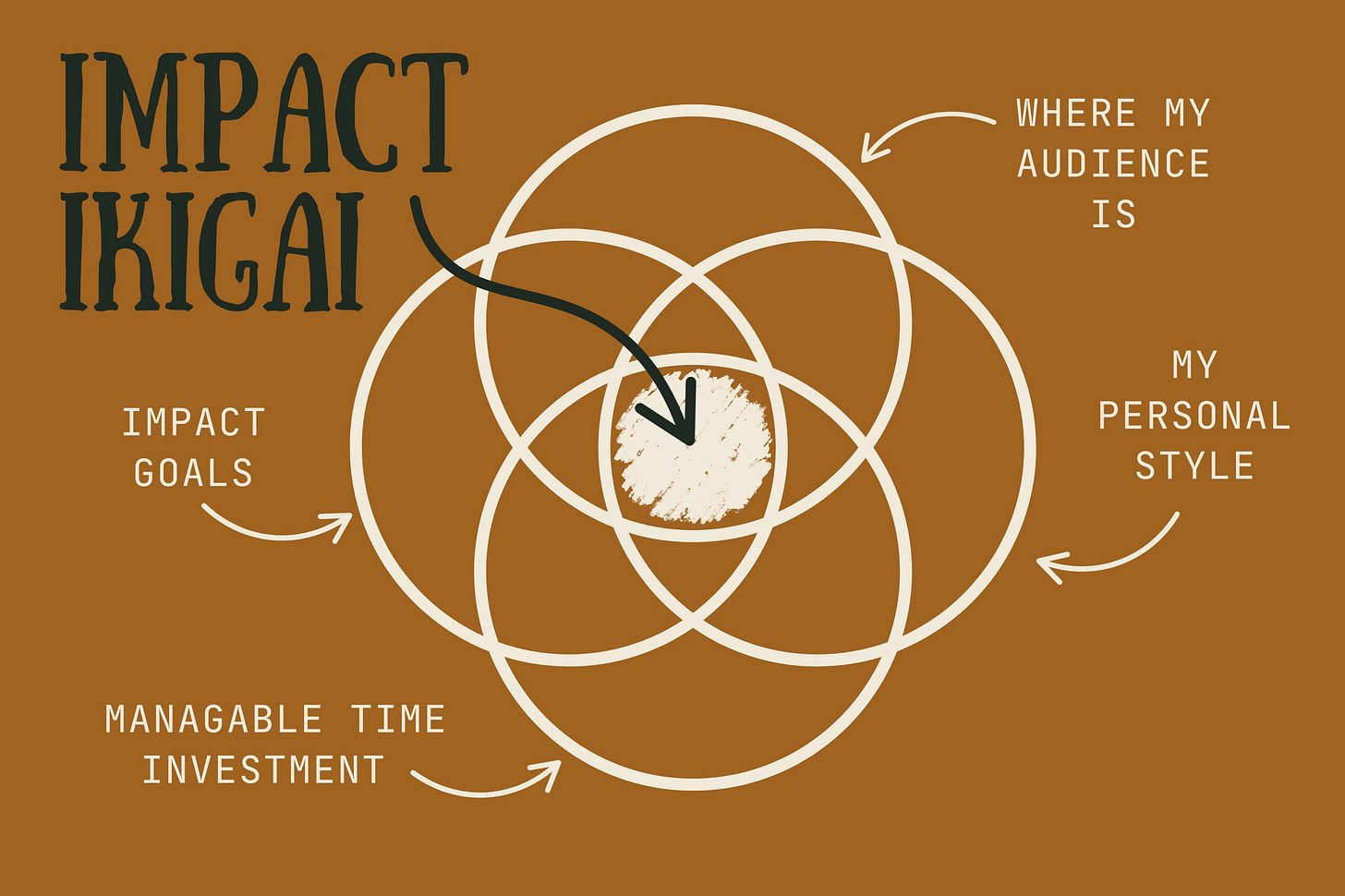So You Want to Share Your Research Online? Here’s How to Pick the Right Platform
And not burn yourself out in the process
In today's world, digital platforms and social media offer unprecedented opportunities for academics to share their work, engage in conversations, and build communities beyond traditional academic channels.
However, the sheer number of options can be overwhelming.
Faced with so many options- blogs, Twitter, Instagram, podcasts, YouTube, and more- the natural next question is:
Which platform(s) should *I* use?
The answer isn't necessarily to be everywhere at once.
A scattered presence across multiple platforms without a clear strategy is often less effective than focused, consistent engagement on one or two carefully chosen channels
…as someone who inherited ALL the social media platforms for my faculty, I can definitely attest to this!
But luckily for you, as an individual you have a lot more scope to be selective.
Choosing the right platform(s) requires aligning your choices with your specific impact goals, target audience, content type, and personal capacity.
Let’s get into it:
Key Factors in Platform Selection
There are four main areas that we need to consider when it comes to choosing the right platform for you and you research:
Goal, Audience, Style, and Capacity
Your Impact Goals
What do you hope to achieve with your outreach?
Your primary objective should heavily influence your platform choice.
If you aim to give in-depth explanations and really go into nuanced thought leadership then platforms like Twitter (X) are probably not the place for you (congratulations on avoiding that disaster zone 🥳) Rather, platforms supporting longer-form content like blogs (WordPress, Substack), podcasts, or YouTube might be a better fit.
If, however, you want to provide timely commentary on world events then microblogging platforms (Twitter (X), Mastodon, Threads, Bluesky) excel at real-time engagement.
If you want to showcase visual material then Instagram, Pinterest, or YouTube are more natural fits.
If you want to lean more into building a community, blogs with comment sections, private groups (Facebook, Discord), or newsletter platforms (Substack) can help with this goal.
This is not an exhaustive list, so really think about WHY you want to get into social media for your research and then try to find platforms that work for that goal.
Your Target Audience
Where does your intended audience already spend their time online?
Meeting your target audience where they are at is waaay more effective than trying to lure them to a new platform, so it is worth doing some research to find out where your people are already hanging out.
Here are some ideas for common audiences:
Journalists or Policy Makers- Often active on Twitter/X, LinkedIn
Younger demographics- Instagram, TikTok, Snapchat
Specific hobbyist or interest groups- Niche forums, Facebook Groups, Reddit communities, Substack
Professionals in related fields- LinkedIn, specific industry forums.
Local community members- Local Facebook groups, community websites, potentially platforms like Nextdoor
Again one size doesn’t fit all here.
Ask around.
If you know someone from your target demographic, or someone who already works with them, ask what platforms they are on and see if that can work for you.
Your Content Type and Style
What kind of material do you plan to share, and what is your natural communication style?
As an academic it’s quite likely that you feel quite at home with the written word. If you want to stick with this then consider blogs, newsletters, LinkedIn articles, and possibly Twitter threads.
But you also might want to branch out and bring some more creative aspects into your outreach work:
Visual materials (images, artifacts, maps) work well on Instagram, Pinterest, or visually-rich blog posts. Audio content (interviews, storytelling) is a good fit for a podcast or YouTube. And Video (lectures, explainers, tours, or mini-documentaries) work on YouTube or (in the case of short form video) TikTok.
Then we have communication style. Just as we have our own preferences for formal vs. informal content, different platforms exist to cater to a whole variety of styles.
Your Capacity and Comfort Level
What can you ACTUALLY manage?
Be realistic about your available time, resources, and technical skills.
It can be so easy to rush into something new and exciting, but remember the key to social media and building engagement is sustained effort, so it is better to pick something that fits your personality and feels sustainable for where you are at right now.
(not what you think the perfectly organised version of you should be able to manage…)
Some key things to consider:
Time Commitment: Platforms like Twitter/X or Instagram often require more frequent, consistent posting than a monthly blog post or podcast episode.
Technical Skills: Are you comfortable with basic website management (WordPress), audio/video editing (podcasting/YouTube), or graphic design (Instagram)? Choose platforms that match your current skillset or your willingness to learn.
Resources: Do you have access to necessary equipment (microphone, camera), software, or institutional support?
Personal Comfort: Do you enjoy fast-paced conversations or prefer more reflective writing? Do you feel comfortable being on camera or prefer audio/text? Choosing platforms that align with your personality makes online outreach less of a chore.
Making the Choice
Whew! That’s a lot of information to distill, but for most academics starting out with digital outreach, it's advisable to think about all these aspects and then *choose one primary platform* that best aligns with the factors above.
You might be able to use this visualisation to help with this. The closer to the middle you can get with your choice the better!
Once you have chosen, focus your energy on mastering that platform, building an audience, and consistently sharing valuable content.
Starting in one place allows you to learn the platform's nuances and avoid spreading yourself too thinly.
Once you have established a strong presence on your primary platform and have a manageable workflow, you can then (and only then 👀) consider strategically adding a secondary platform that complements the first. But you should really consider why you want to do this.
Try not to fall into the trap of going after vanity metrics or trying to “be cool”.
Don't feel pressured to adopt every new platform that emerges. Evaluate new tools based on the same criteria: Do they help you reach your specific audience and achieve your impact goals in a way that aligns with your content and capacity?
Choosing your digital channels thoughtfully is essential for turning your outreach intentions into an effective, sustainable practice.
Good Luck!





